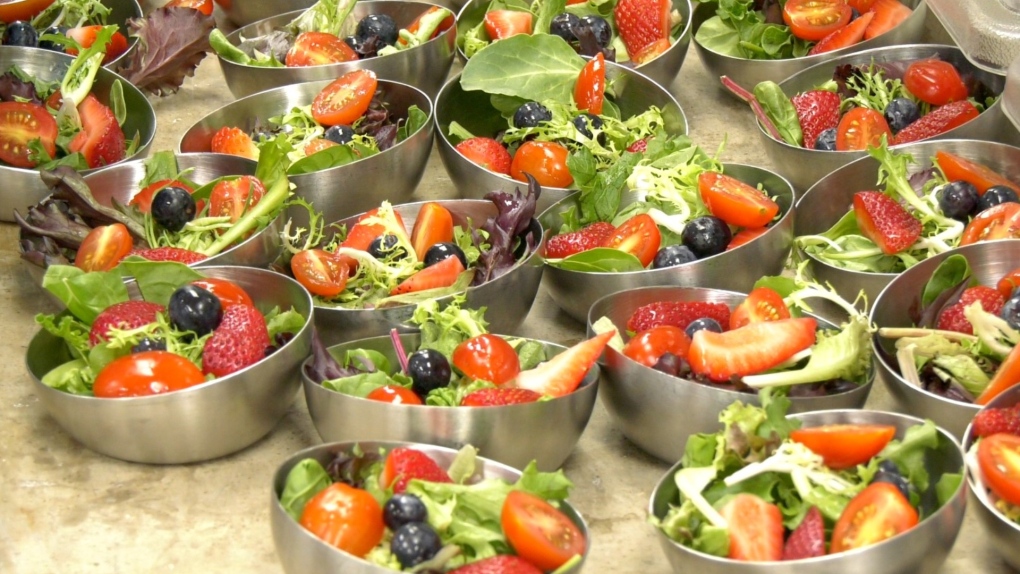Airline catering company Gate Gourmet prepares meals for clients all over the world.
The Calgary facility is located next to the airport and employs approximately 100 people.
Every day, staff prepare around 5,000 meals for travelers flying over Europe and North America.
“The food that is actually delivered to customers on board is incredibly delicious,” said Tony Collis, president and managing director of Gate Gourmet.
“I wish I could eat that in the cafeteria every day, but that food isn't available. It's something special for our guests, designed for you and presented for your guests.”
Collis has worked in the airline industry for 39 years and said he remembers the days when meals were included in the ticket price for passengers in all classes.
“Today, things are a little different,” he says, “but some of the food on board is still good in business class, and there's a lot of good food available in economy class.”
Collis said the airline catering industry is highly competitive, with seven companies in Canada alone.
He says the industry is also focusing on sustainability.
“Certainly, we're seeing more and more of that happening, from packaging to recycled products,” he said.
“We're also implementing, at least across Canada, different technologies such as food digesters, which cut out the waste, recycle it and put it right back into the sewer system so it's not a landfill issue for us.”
Gate Gourmet has hired Chef Molly Brandt as executive chef for culinary innovation in North America. Chef Brandt has been with the company for three years and, although she has no airline experience, she has worked for cruise lines and Michelin-starred restaurants.
“I think working in airline catering is a big challenge. In many ways it's a little more difficult than working in a fine dining restaurant,” she said.
“My goal here is to bring about change in airline catering. And what I like most is the feedback that they can't hear anything and just enjoy the food. To me, it's such a beautiful silence.”
Brandt is also mindful of how his sense of taste changes at 11,000 metres as he flies to his destination.
“It turns out that in air, you lose about 30 percent of your taste for salt,” she says, “so tomato juice and a Bloody Mary taste great in air, so we try to keep that in mind when we cook.”
Brandt has to work within certain constraints when preparing the meals: They have to fit inside a cart that could be bumped while being carried onto the plane, and plates must be no higher than two centimetres high.
“I try to look at the dish as a whole and make sure it has a balanced flavor profile – sour, sweet and salty, with an overall mellow flavor, as opposed to a dish that's just seasoned with salt.”
Corey Chou leads the Calgary operation as general manager and says staff have a specific schedule they have to follow for airline customers.
“We plate it within 24 hours, and then once it's plated, we have another 24 hours to ship it, so everything has to follow a certain sequence. Once everything's done and it's ready to ship, we take the temperature to make sure it's within range and then we load it straight onto the truck.”
Chow said it takes trucks about 45 minutes to transport the food to the plane, so the food is as fresh as possible for travelers.
“We cook it down to a lower temperature,” he says, “so it's not quite the 'you get on a plane and you get a gourmet meal' restaurant style that people expect, but we're serving as gourmet a meal as we can within the limitations.”
“I ask every chef I hire, 'Can you make leftovers taste good?' If the answer is yes, they've passed the first step.”



